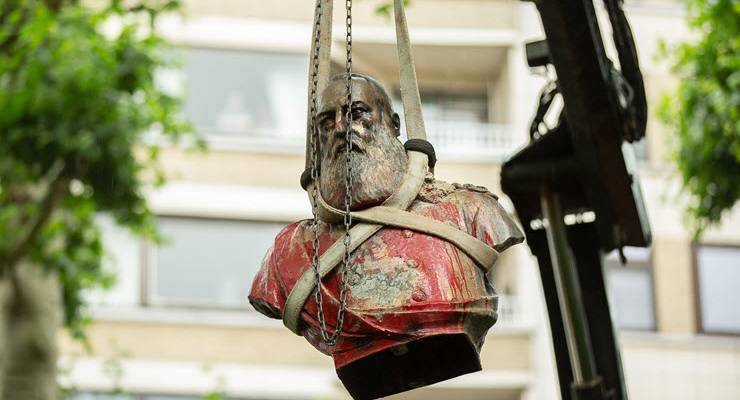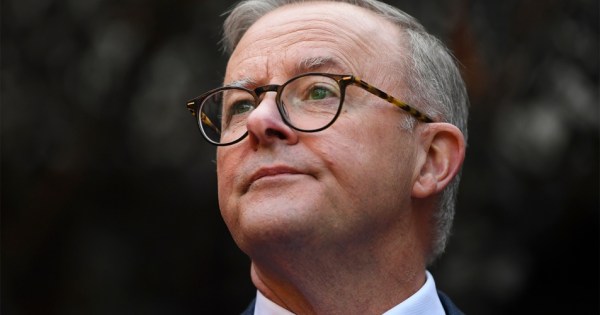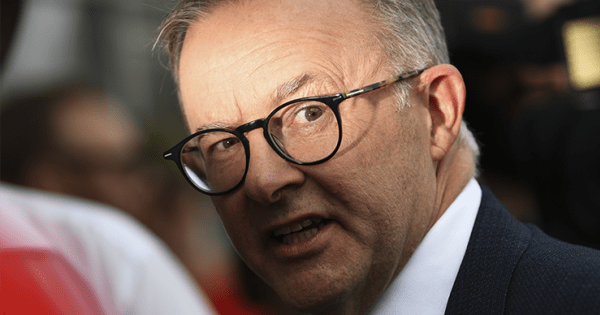
There’s a campaign to move Captain Cook’s statue to the museum. It’s part of a global movement to remove monuments to former national heroes whose actions, once celebrated, offend some modern sensibilities.
Worldwide there has been mob destruction of sculptures, or vandalism sugar-coated with virtue.
The notion that the attitudes and cultural context of people from another age differ from those of contemporary kids is utterly unsurprising. But is it a reason to pull down their statues?
Some think it righteous, others find it belligerent.
Is there a better way?
A GoFundMe page #BlackLivesMatter Recontextualise Colonial Statues points to an alternative of keeping the statues, but augmenting them with others that tell the other side of the story. A picture shows the silhouette of a man hanging from a tree.

In the Belgian town of Ghent, a bust of King Leopold the Second was daubed with red paint before it was removed entirely by authorities.
Leopold was popular at home, but less so in Africa. He ran the Congo as a private company, making a fortune from ivory and rubber. When locals failed to meet their rubber quotas he had their hands hacked off.
He was responsible for between 1 million and 15 million Congolese deaths, with consensus settling on 10 million. He used the profits to fund great buildings in Belgium that he subsequently gifted to the nation.
It seems laudable that the bust of this butcher be removed from public view — but is it? After all, he is a seminal figure in the history of Belgium. To celebrate him is beyond churlish, to expunge him from the public record is to whitewash history. It’s a form of sanctimonious denialism perilously close to book burning.
It also has the potential to drive the wedge of division deeper, offering new inspiration to the very demagoguery it opposes. Donald Trump’s Independence Day speech this past weekend used recent calls for monument removal as fuel for a fire of righteous fury among the conservative faithful:
“Our nation is witnessing a merciless campaign to wipe out our history, defame our heroes, erase our values, and indoctrinate our children. Angry mobs are trying to tear down statues of our founders, deface our most sacred memorials, and unleash a wave of violent crime in our cities. Many of these people have no idea why they’re doing this, but some know what they are doing. They think the American people are weak and soft and submissive, but no, the American people are strong and proud and they will not allow our country and all of its values, history, and culture to be taken from them.”
He delivered his oration positioned in front of Mount Rushmore, as a de facto fifth head, and clearly revelled in the chants of “USA, USA!” and “four more years!” that his words inspired.
In the UK, some are calling for statues of Churchill to be torn down on the grounds he was a racist. He may have been, but as a figure instrumental in the defeat of Adolf Hitler the karmic scales seem to tilt his way, and to attempt to excise him from history is silly.
The purpose of studying history is not to learn that King Egbert was followed by Aethelwulf and Aethelbald; it is surely to get a long-run dataset on human behaviour and thus better understand what our species has done right, and what it’s stuffed up. George Santayana’s original dictum was paraphrased in a speech to Commons by Churchill in 1948: “Those who fail to learn from history are condemned to repeat it.”
Might recontextualisation be better?
If the statue of King Leopold II were retained by the good burghers of Ghent, yet accompanied by a pile of amputated stone hands and an explanation of his atrocities and civic generosities, is that not more useful?
Is the destruction of statues led by ardent students of history keen to show a better way, or an inauthentic displacement of generic frustration? Is it a generational power play or just self-indulgent attendance at a giant pity party?
Decide for yourself. But, tellingly, the GoFundMe page has only raised $60.
Is it time to remove statues of historical figures who committed atrocities, or is that whitewashing history? Let us know your thoughts by writing to letters@crikey.com.au. Please include your full name to be considered for publication in Crikey’s new Your Say section.
Toby Ralph is a global marketing consultant who has worked the Liberal Party in Australia and on elections around the world.







Statues should be recommissioned for other purposes, such as providing urban decoration. They should be anonymous when the depicted character has a chequered history. There’s a monument in Munich’s Marienplatz which originally dedicated to he victory at White Mountain outside of Prague, which set off the Thirty Years War, but which was rededicated to some pope or another.
The history of famous people shouldn’t be forgotten though, good and bad.
Most of the statues of Cook seem to date from about 1870, the centenary of his visit to the east coast of Australia. The reasons for this are probably twofold. First, as it was a centenary and the colony wanted to celebrate having a sense of history, but second because Cook was from a working class background yet had risen to fame through his ability. It fitted the narrative that white Australia was constructing for itself “Wealth for toil”, neatly eliminating both its convict origins and the treatment of Aboriginal peoples. This is the era of the Australian Natives Association https://en.wikipedia.org/wiki/Australian_Natives%27_Association, which limited its membership to white men exclusively descended from free setters. It’s time to move those statues to a museum of colonial history which could critically examine the constructions of the past.
Interestingly in 1970 when serious public money was made available for constructions bearing the name “Cook” Newcastle Council commissioned a modernist fountain bearing no resemblance to any mariner, while the Trustees of the Art Gallery of New South Wales quietly distanced the source of the funding from their new wing.
As a rough rule of thumb, Joanna, statues are generally constructed to mark a civil event of some significance after about 45-60 years of the event occurring. That interval of time is establishes the point when the event is beginning to disappear from living memory. To about 1700 the same was the case regarding events of a religious nature.
The exception occurred immediately after WWI when even the smallest town of perhaps 600 people in both Australia and NZ had created a memorial of some form to the Great War by midish 1920.
With the greatest respect, you are wrong. The late 19th century cult of Cook is connected with the myth of Australia as a working man’s paradise and the push to Federation. The Australian Natives Association was also closely associated with the White Australia Policy.
There is an especially unfortunate statue of Macquarie in Hyde Park dating from 2013 and another appalling one of Governor Bligh down at the Rocks that was placed there in 1987. I have no idea why these were commissioned so many years after these gentlemen ruled the convict colony.
You have identified exceptions to the general remark Joanna. Take a stroll about a former colonial country (not necessary British) and the same general rule applies. Investigate when most of the statues relating to the Civil War were constructed and you will find the mode being during the 20s and the 30s.
Similarly for the War of Independence or the Trafalgar or Waterloo or the Crimea. Of course statues do not have to be related to wars. Moreover, some statues, over time are removed as the “face” of the location changes owing to greater population and attendant transport requirements.
I’m surprised to learn that a statue of Bligh was considered justifiable as late as the 80s. His governorship was hardly meritorious and effigies of him were burnt when he was transferred to NZ; in a town known as Nelson (after the Admiral) . Nevertheless, he was a first-class navigator (acknowledged by his peers) which was something of a black art in those days. One only has to look at a GPS nowadays.
However, inasmuch as I would have been loathed to recommend its construction I’m no more inclined to recommend its removal because so doing would, as I have conveyed elsewhere, would be an act of weakness rather than of strength.
Curiously enough I wasn’t hunting for exceptions, but for well-known obvious examples – starting with the most contentious statue of Cook.
The Bligh and Macquarie statues came from the same celebratory colonialist impulse that led to the original Australian Natives Association. I understand the men who proposed them can still be found drinking their port in a dark recess of the Australia Club.
The celebratory US confederate statues are directly related to the Jim Crow laws and the rise of the KKK. Monuments and memorials always have an agenda.
You really need to know the difference between “loath” & “loathe” – words you misuse constantly.
A $5 word does not compensate for a 5 cent mind.
The typos. and other malapropisms are equally unimpressive.
Regarding your post of 07July-17:30, Joanna,
> starting with the most contentious statue of Cook.
Forgive me but I wonder if the word ‘contentious’ is justified. Cook’s contribution to the Empire is beyond doubt. He was regarded in (current) Hawaii as a god and got himself killed for acting contrary to how a god would or should act.
> The celebratory US confederate statues are directly related to the
> Jim Crow laws and the rise of the KKK.
You are painting with a wide brush Joanna. The Jim Crow stuff did not commence until 30 years after the Civil War AND in contradiction to the Civil Rights Act of 1875. The KKK began as a reaction to the period known as ‘Reconstruction’ which existed to about 1880 (or a bit less). Confederate Offices were denied the vote along with other laws deemed unjust. Grant (the President) did what he could to remove the KKK from influence which, in the first instance was concerned with the then Republican government and not blacks (which, as an aside, contributed to the South being Democrat for quite some decades). The Republican-Democrat inversion is interesting in itself.
> Monuments and memorials always have an agenda.
Agreed – as does the airbrushing of history rather than confronting the history.
As an aside, given the membership fees, there are no “dark recesses” in The AustraliaN Club and I’ll refrain from remarking upon the membership.
Cook was a cabin boy aficionado who mistreated his wife.. He sailed straight past the heads in Sydney but didn’t miss the worlds largest structure.. Bank’s Bitch..
In these arguments about Australia’s history, with accompanying howls of outrage over damaging a few statues commemorating old white men – there’s barely a mention of a mega-mining company in WA blowing up an incredibly significant monument to the continuous history of 46,000 years here, with more destruction planned. Heartbreaking.
If those statues are so good at teaching us “real history” then how have we ended up with a Prime Minister who believes Cook circumnavigated Australia?
What a load of nonsense this is – removing some statues is “perilously close to book burning” what hysterical garbage.
Its also full of the usual straw man and bad arguments: “you can’t judge the past by the standards of the present”. What a pile of ahistorical tripe. It assumes there was some kind of ‘consensus view’ on things at the time (blacks inferior, slavery ok etc. etc.). This is nonsense. The history of ideas in always a contest of politics and beliefs. Again, statues are particularly unable to convey this diversity, prioritising, as they must, the implicit views of whoever is being memorialised.
The argument that statues are there to give us some value free history lesson about what is objectively “important” is just special pleading with bells on. What gets memorialised is a choice. How it gets memorialised is a choice. A free-standing statue teaches nothing. It is just a representation of whatever was thought important by those who had the requisite cash and social power to have it erected. This goes double for figurative statues – a statue of a person is not even ‘about’ whatever it is the history is. Its just a memorial. Statues – at best – trigger a desire to learn more about history. A desire that can’t be satisfied if a statue just sits out in public with no setting and no context. Which is why (see below) the best place for them is in a museum.
There’s a whole lot more here about historiography which can’t even be unpacked, but seriously, this is just a ‘1066 and all that’ view that bears no relationship to what history (either as a profession or as a record of the past) actually is.
It is wonderfully appropriate that “…a Prime Minister who believes Cook circumnavigated Australia…” is the MP for the eponymous electorate.
Can Mr Ralph or anyone else please explain to me how the removal of a statue is expunging or excising someone from history? As the Mayor of Ghent noted there is a difference between remembering someone and glorifying them. Statues are a form of glorification. Their removal does not remove people from the history books or discussion, it removes them from the street. We can do with out this ill-considered reaction to calls for their removal.